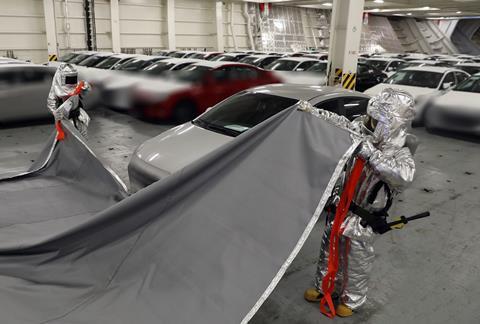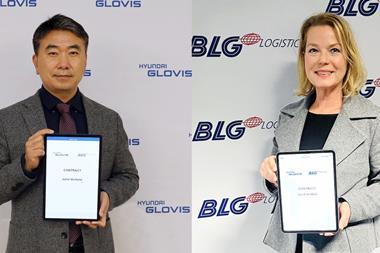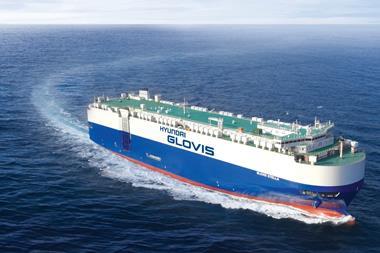One of the world’s biggest finished vehicle carriers, Hyundai Glovis, is strengthening measures designed to prevent and control vehicle fires onboard its pure car and truck carriers (PCTCs). This year, it plans to have all 90 of its car carriers equipped with new equipment to make the shipment of finished vehicles safer.

The move comes at a time when more electric vehicles are being moved by ocean transport and in the wake of a number of serious vessel fires at sea. In the most recent incident, the Mitsui OSK Line (MOL) vessel Felicity Ace caught fire in the mid-Atlantic with 4,000 vehicles aboard and eventually sank.
While not exclusively the cause of finished vehicle fires at sea, the lithium-ion batteries used to power EVs are high and can burn with high intensity if they are damaged because of thermal runaway, in which an increase in temperature changes the conditions in a way that causes temperature feedback. It can be caused by an internal short circuit or by batteries coming into contact with each other or coming into contact with conductive material or metal surfaces; it can even be caused by an excessive movement that leads to damage.
Hyundai Glovis transported about 250,000 EVs in 202, accounting for about 45% of the global EV movements by ocean.
Monitor and control
The measures being taken by Hyundai Glovis to control fires begin with periodic temperature monitoring and the installation of heat/smoke detectors to prevent fire. CCTV is also installed on each deck of the cargo bays to monitor the condition of the loaded vehicle, both designed to catch the risk of fire in the early stages. The company has also installed an onboard fire cover and water mist lance to quickly contain any fire that is detected.
According to Hyundai Glovis, the fire cover is a specially coated cloth that can be pulled onto a burning vehicle to prevent oxygen inflow, turn off the fire, and block heat and smoke. The company said it was developed in Norway in 2014 and has been proven effective in preventing the spread of fires in EVs. It is already being used by institutions such as fire departments.
The company said the cover effectively prevents fire spreading from one vehicle to the next even if the cargo is densely loaded, as tends to be the case on car carriers.
The water mist lance is a fire extinguisher with pipes and nozzles that allows the user to spray water directly on areas even if they are in enclosed spaces. The operator can insert a long tube of more than one metre into a vehicle and spray water close to the bottom of the car.
For the added safety of the crew, flame-retardant and heat-resistant fabrics and purification filters have been included with fire evacuation masks. They can filter out gases.
The company has also drawn up a new manual with guidance for preventing accidents and responding to emergency situations backed up with training at least twice a year.
“We have established a system to understand the changing trend of the automobile industry and to pre-emptively meet the needs of shippers,” said a spokesperson for the company. “We will continue to lead the global market by introducing differentiated capabilities.”
Loading strategy
Hyundai Glovis is also taking measures in the allocation of vehicles in the vessel. EVs, which are heavier than normal combustion-engine vehicles, will be stored in the lower floor of the vessel as much as possible.
“The temperature of the floor is relatively constant, so that [an] even quality of the vehicle can be maintained,” said the company in a statement, adding this would help in the suppression of any fires.
That is also likely to help with balance and prevention of vessel listing. Hyundai Glovis did not claim this advantage, but its Golden Ray car carrier vessel capsized in 2019 because of inaccurate stability calculations, according to the findings of the National Transportation Safety Board (NTSB). Parking heavier EVs evenly along the bottom of the vessel will help with stability and contain the vehicles further away from the crew.

























![Global[1]](https://d3n5uof8vony13.cloudfront.net/Pictures/web/a/d/s/global1_726550.svgz)













No comments yet